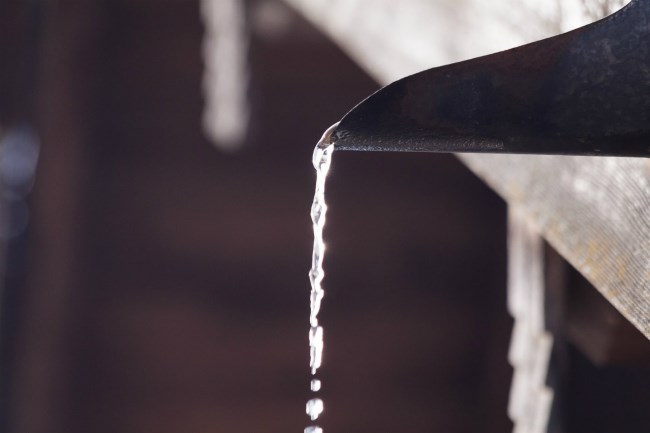Purchasing a home is a huge financial commitment, which is why it’s crucial to thoroughly check out the property first before you make an offer.
A smart home buyer is a well-informed home buyer. Before making any hasty offers to purchase, be on the lookout for these common red flags when viewing a home for sale:
1. Foundation problems
The foundation of a home is considered one of the most important parts of a house which can be quite costly to repair.
It’s essential to scan the property’s foundation and structure for any visible signs of damage.
Be on the lookout for any large cracks that may exist in the foundation of the home.
Slanting floors and walls can also be signs of structural damage that may exist in the home’s foundation.
If so, it is advisable to hire a professional home inspector to conduct a home inspection of the house.
2. Pest and borer damage
No one wants to buy a house with a pest problem, be it roaches, mice, or termites.
Pest infestations in a home can easily go unnoticed, which is why it is essential for you to be on the lookout for any unwanted pests that may be present as you tour the house.
Wooden furniture that has been eaten away, dead bugs and pest droppings, can be a sign that the home may have a pest problem.
The most common pests that raise red flags are borer, ants, fleas and rodents.
It is however mandatory for homeowners to obtain a Beetle Infestation Clearance Certificate before selling their home.
3. Faulty electrical wiring
Electrical wiring that is worn out, openly exposed or badly implemented around the house, is a definite red flag for any home.
Faulty electrical systems and bad wiring can be a source for potential fires, electrocution and unwanted power outages in a home.
It is however, mandatory for home owners to be in possession of a valid Electrical Certificate of Compliance before selling their home and it is their responsibility to repair any faults identified.
4. Poor drainage and water issues
Water damage is generally easy to spot in a home, but it can also sometimes be hidden between walls or in the attic.
Most water problems in a home are directly related to poor drainage or grading.
An obvious sign of poor drainage is large puddles or pooling water near the foundation.
Other common signs for poor drainage include, overflowing gutters and evident cracks in the home’s foundation.
When viewing a home, it is essential for buyers to check for leaky faucets and pipes, slow drains and any excess moisture or water stains that may exist in the basement or on the walls and ceilings.

5. Unpleasant odours and mould
Similar to water problems, mould is another cause for concern if found in a home.
It is important to keep an eye out for any visible signs of mould near moist areas, like crawl spaces, attics, basements, bathroom vents, and windows.
Mould and mildew are both serious conditions that should be inspected by a professional if detected in a home.
Remediation can be completed in a home to remove the mould, but is a costly expense.
It is also advisable to be wary of bad odours and home owners who make a forced attempt to make their homes smell too nice.
Homes that have an excessive amount of air-freshener, candles and scented potpourri in each room of the house, could be attempting to cover up a foul odour.
While this isn’t always the case, it’s something that buyers should still keep in mind when viewing a home.
6. Mediocre maintenance
A home that has plants growing out of its gutters, could be a sign of poor home maintenance.
Visible signs that indicate a lack of basic home upkeep are things such as broken fixtures, cracked brickwork, non-functioning toilets or an overgrown lawn, which are all common indications that the house has been poorly maintained.
Purchasing a home with poor home maintenance and amateur repairs can end up costing you more money down the road.
If you love the house, try negotiating with the owner to have him either make the repairs or credit you the costs of hiring a professional to fix the problems.
7. Shady neighbours
While the home for sale might not raise any alarm bells, the neighbouring house may, which is why it’s important to take into consideration the type of neighbours you could potentially be moving next door to.
Signs of a troublesome neighbour are poor home maintenance, overflowing trash, personal items or debris scattered on the lawn, as well as signs that too many occupants may exist in one property.
If you want to get a better sense of who you might be living next door to, consider chatting to local residents in the area to learn more about the neighbourhood and the type of culture and lifestyle you can expect.

8. Signs of a dodgy neighbourhood
A good neighbourhood is key to a good home investment.
It is essential to ensure the community you’re potentially moving into is the right fit for you and your family.
Assess the area to determine the level of safety, walkability and easy access to local parks and businesses.
A safe and well maintained neighbourhood that is close to all amenities, is generally considered a good neighbourhood to invest in.
On the other hand, a neighbourhood that comes across as poorly maintained and has multiple homes for sale in the same location, could be a sign that the area isn’t the best of places to move to.


